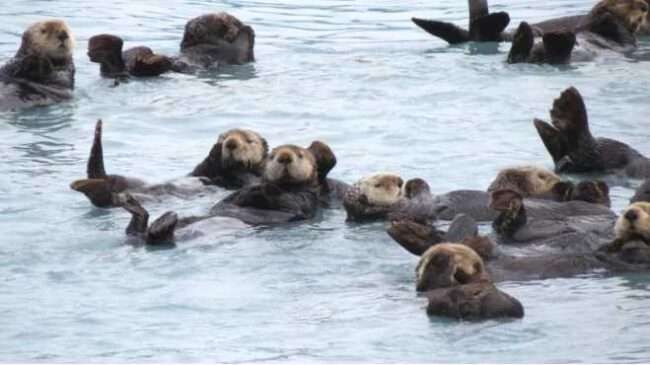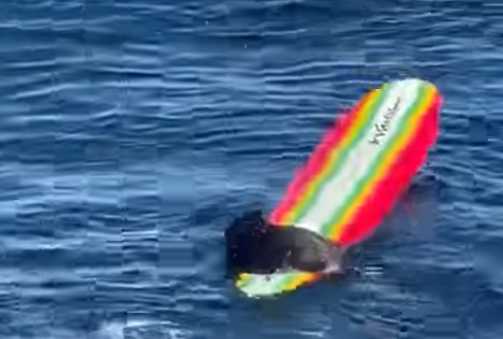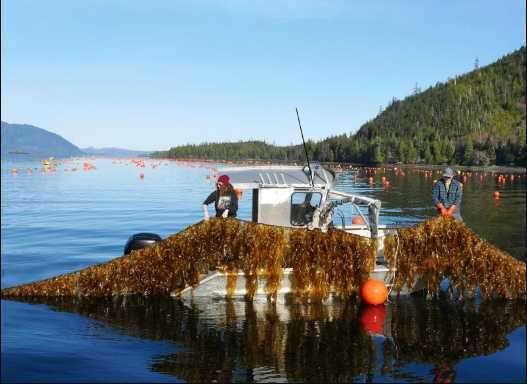
Alaska is home to about seventy-five percent of the world’s sea otters. Sea otters are a keystone species, as they have a substantial impact on the ecosystems they inhabit. The growing interest to increase mariculture activity in Alaska is prompting questions about interactions between sea otters and industry. Alaska Sea Grant is funding research in partnership with oyster farmers to find answers.
University of Alaska Fairbanks professor Brenda Konar and graduate student Emily Reynolds are studying sea otters in Kachemak Bay, an area with both a booming sea otter population and the highest density of oyster farms in the state. Konar and Reynolds are working with oyster farmers in Kachemak Bay to conduct field surveys comparing sea otter activity and foraging behavior in farmed and unfarmed areas.
“Going into the project, there were a lot of unanswered questions about the interactions between sea otters and oyster farms,” said Reynolds. “We thought that sea otters might be drawn to farms for resting or for feeding. They could preferentially forage at farms, either directly by feeding on the oysters or indirectly by feeding on other organisms that associate with farms or grow on farming structures. Farms could also be located in areas sheltered from weather, attracting otters to rest there.”
Results from their first monitoring season suggest that sea otters behave similarly within and outside of farms. In both the farmed and unfarmed sites, sea otters had similar foraging success, consumed similar food items, and spent the majority of their time resting.
This summer, Reynolds will continue to observe sea otter behavior in Kachemak Bay to better inform their analysis. “We still need to make comparisons with otters feeding in bays that have no farms present to gain a broader perspective on how farms may be influencing otter behavior,” said Reynolds. “While it appears that otters are not feeding on oysters when cages are used for the oysters, they may be feeding on fouling organisms on the cages, like mussels.”
“Alaska has vast potential for mariculture development,” said Konar, “but the sustained use of these waters requires an understanding of the relationship between the farms and their environment. This project will help farmers, agencies, and the public better understand how sea otters interact with oyster farms.”
[content id=”79272″]








